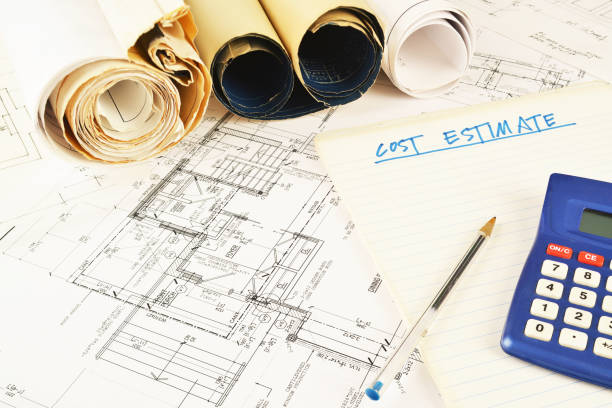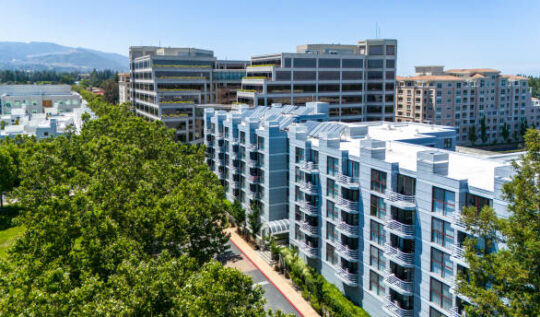What Are the Four Types of Costs in Real Estate Development?
Real estate development is a complex process that requires detailed financial planning across multiple stages. One of the most critical components of a successful project is understanding and managing development costs. These expenses go far beyond construction and must be evaluated early and often to maintain profitability and secure financing.
This guide explores the four major categories of real estate development costs—land costs, hard costs, soft costs, and carry costs—along with strategies to estimate, control, and optimize them at every phase of the project lifecycle.
For developers in Los Angeles, learn more about our full-service real estate development consulting tailored to local zoning, permitting, and cost control.
Table of Contents
ToggleLand Costs
Definition
Land costs are the expenses related to acquiring the property where the development will be built. This typically marks the first significant financial outlay in the development process and directly impacts feasibility and return on investment.

Key Components
Purchase Price – The negotiated price for acquiring the raw or entitled land.
Due Diligence Costs – Includes:
Soil testing and geotechnical studies
ALTA/NSPS land surveys
Appraisals and market studies
Closing Costs – Such as escrow fees, title insurance, legal reviews, and recording fees.
Factors That Influence Land Costs
Location – Prime, high-demand areas usually carry premium price tags.
Zoning and Entitlements – Land zoned for high-density or mixed-use is more valuable but may involve lengthy land use planning reviews.
Market Demand – Influenced by housing shortages, economic growth, or changes in municipal development priorities.
Strategic Considerations
Negotiation Tactics
Use seller-financing, phased closings, or land banking to your advantage.Valuation Methods
Comparable Sales
Residual Land Value
Income Approach
Learn more about how we assist clients in site selection and valuation.
Risk Assessment
Evaluate flood risk zones, environmental contamination, title issues, and zoning overlays before acquisition.
Hard Costs
Definition
Hard costs are the direct, tangible expenses associated with the physical construction of the project. These often account for 60–70% of the total development budget.

Key Components
Materials – Concrete, steel, wood, insulation, windows, and finishes.
Labor – Skilled and unskilled workforce wages; can vary based on prevailing wage laws.
Equipment – Heavy machinery, tools, safety gear, and rentals.
Infrastructure – Water and sewer connections, grading, street widening.
General Contractor Overhead & Profit – Built into contractor bids and change orders.
Need help managing bids or contractor negotiations? Explore our construction management advisory for investors and developers.
Factors That Influence Hard Costs
Project Size and Complexity – Mid-rise and high-rise buildings require more materials and labor coordination.
Material and Labor Volatility – NAHB construction cost trends show rising costs for lumber, drywall, and concrete.
Construction Timeline – Delays lead to escalating costs in equipment and supervision.
Site Conditions – Soil issues, environmental mitigation, and utility conflicts increase sitework budgets.
Strategic Considerations
Detailed Estimating Tools
Use RSMeans or ProEst for cost projections.Value Engineering (VE)
Optimize materials and systems to reduce costs while maintaining functionality. See our blog on how value engineering controls development costs.Contingency Planning
Allocate 5–15% of the total construction budget for unexpected changes or change orders.
Soft Costs
Definition
Soft costs are the indirect expenses necessary to design, entitle, and manage a development project. These typically range from 15% to 30% of the total project budget.

Key Components
Architectural & Engineering Services – Includes schematic design, construction documents, and civil site engineering.
Permits & Regulatory Fees – Building permits, traffic mitigation fees, plan check fees, and impact fees.
Legal & Financial Services – Contract drafting, LLC formation, project financing structuring.
Insurance – Builder’s risk, commercial general liability, and wrap-up coverage.
Consulting Services – Third-party plan check, energy modeling, tenant buyouts, land use consultants.
Owner’s Representative and Project Management – Coordinates all stakeholders and enforces timelines and budgets.
Factors That Influence Soft Costs
Municipal Complexity – Cities like Los Angeles, San Francisco, and Seattle have detailed review processes that increase consultant time and regulatory fees.
Professional Team Experience – Hiring premium firms yields faster approvals but at higher cost.
Project Type and Scale – Mixed-use or multifamily buildings often require more legal, design, and public outreach.
Strategic Considerations
Proper Budgeting – Set aside appropriate funds for architectural redesigns, community outreach, and extended review periods.
Contract Strategy – Use fixed-fee or not-to-exceed contracts for design teams.
Permit Expediting – Learn how our team helps developers accelerate permitting timelines in complex jurisdictions.
Carry Costs
Definition
Carry costs—also known as holding costs—are the ongoing expenses that accrue between land acquisition and revenue generation.

Key Components
Property Taxes – Based on assessed land value and improvements.
Financing Costs – Includes:
Loan interest
Construction loan draw fees
Bridge loan or equity partner returns
Site Maintenance and Security – Temporary fencing, cleaning, pest control, power, and inspections.
Insurance – Ongoing coverage requirements for unoccupied buildings and active job sites.
Factors That Influence Carry Costs
Timeline Duration – The longer the project takes to entitle, build, and lease/sell, the higher the monthly burn rate.
Financing Structure – High-interest bridge loans or equity partners with preferred returns increase monthly obligations.
Municipal Delays – Permit delays or legal disputes add to carrying timelines.
Strategic Considerations
Efficient Project Scheduling – Every day of delay adds cost. We offer timeline optimization strategies for faster delivery.
Cash Flow Planning – Model worst-case scenarios for interest accrual and property tax hikes.
Financing Solutions – Consider construction-to-permanent loans, tax increment financing (TIF), or opportunity zone funds.
Conclusion
Understanding the detailed breakdown of land costs, hard costs, soft costs, and carry costs is essential for developers to build accurate budgets, secure financing, and maximize ROI. Each cost category interacts with the others and must be carefully managed across the entire project lifecycle.
At JDJ Consulting Group, we help developers:
Identify cost-saving opportunities through value engineering
Navigate city permitting and entitlement processes
Optimize budgets and pro forma planning
Deliver projects on time and within scope
👉 Need help planning your next development? Contact us for a consultation.










Los Angeles Construction Cost 2025: Complete Updated Guide
June 26, 2025
[…] a house in Los Angeles in 2025 costs between $200 and $650 per square foot, depending on materials, design, and neighborhood. For a standard 2,500 sq. ft. home, total […]
AB 2097 Parking Reform: How Developers Cut Cost to Build Better
July 7, 2025
[…] the middle of a historic housing crisis, where the average home costs over $800,000 and rent eats up more than a third of most people’s income, every square foot of land matters. […]